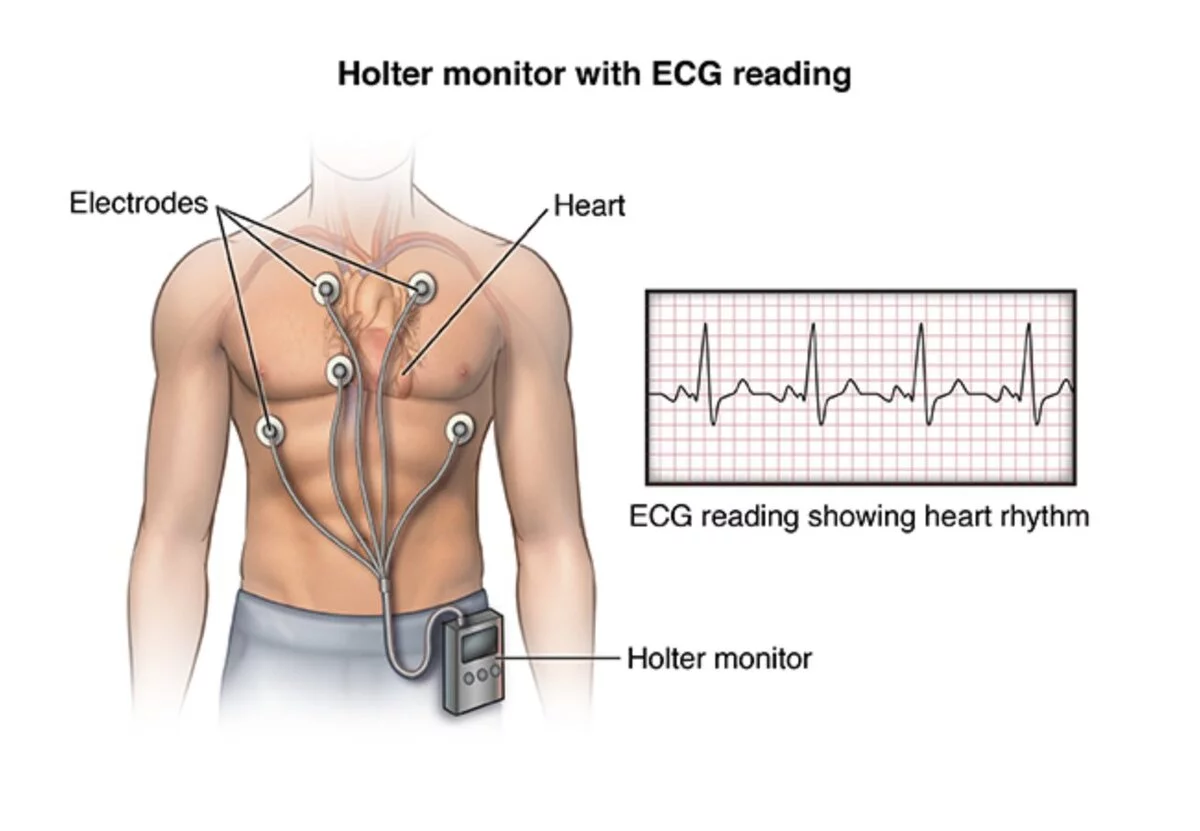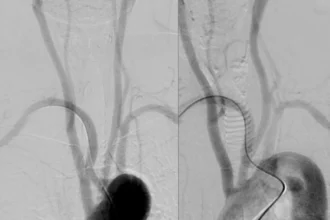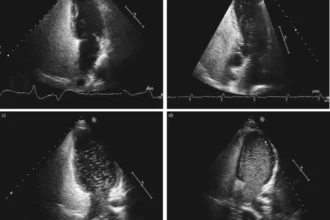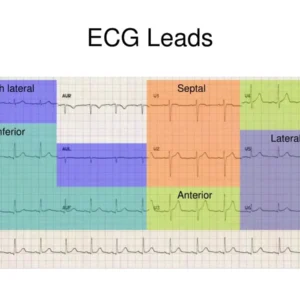A Holter monitor, a tool used to record your heart’s behavior throughout 24 to 48 hours, can prove valuable in diagnosing issues such as an irregular heartbeat or heart palpitations. This portable device serves as a constant sentinel even when other tests such as an EKG fail to detect any abnormalities. Featuring a ‘wear and go’ structure, the Holter monitor blends perfectly with your daily routines while recording the intricate details of your heart’s activity. Your healthcare provider can then analyze the holter monitor results example, easing the process of discussing and understanding the diagnosis.
In essence, what is a Holter monitor? This wearable gadget is a form of an ambulatory electrocardiogram that tracks your heart’s rhythm and rate over time. Capable of mirroring your heart’s operation as you go about your day, the Holter monitor helps the physicians grasp a complete picture of your heart’s state.
The design attributes of the device include:
- Compact size, similar to a mobile phone.
- Powered by battery.
- Comes with wires and electrodes, which are small patches that adhere to your skin.
The invention of the Holter monitor in the 1950s by Dr. Norman J. Holter paved the way for extended periods of cardiac activity monitoring. You can continue your everyday tasks while wearing it for 24 or 48 hours.
Does the Holter monitor cause discomfort?
The short answer is, no. Wearing a Holter monitor is a painless experience.
So, who requires a Holter monitor?
Individuals with an inconclusive electrocardiogram (ECG or EKG) may benefit from the use of a Holter monitor. Such an EKG connotes ambiguous findings, which can stem from symptoms such as a racing or fluttering heart, or unexplained fainting incidents.
In scenarios where an EKG only offers limited information owing to its short recording duration, a Holter monitor can step up. It captures more comprehensive data regarding your heart’s activity. Wearing it for a full day or two significantly increases the probability of detecting abnormal heart behaviors, which would otherwise be missed. Using a holter monitor results example, your healthcare provider can better understand and address the heart’s irregularities.
Understanding Holter Monitor Results: A Practical Example

In the process of deciphering “holter monitor results example”, it’s necessary to bear in mind that its primary focus often lies in determining if the inexplicable symptoms someone experiences are due to cardiac arrhythmia.3 The relevancy of accurately linking these symptoms to concurrent arrhythmia is paramount to correctly diagnose the condition.
A typical holter monitor results example will represent no noteworthy alterations in heart rhythm. In reality, a majority of individuals occasionally experience harmless types of arrhythmias, which remain asymptomatic.
If such an arrhythmia emerges in the Holter report, its occurrence in the absence of concurrent symptoms suggests that this arrhythmia isn’t a cause for concern. Moreover, it generally doesn’t mandate any treatment or additional assessment.
Conversely, when symptoms reliably coincide with a cardiac arrhythmia, it indicates a problematic arrhythmia–at the very minimum, it is symptomatic–and thus demands attention.
Your healthcare specialist may also go over other outcomes revealed in the “holter monitor results example”. These could include aspects such as your peak, lowest, and average heart rates, the total count of premature atrial complexes (PACs) and premature ventricular complexes (PVCs), and any instances of probable ischemia.
In cases where your Holter assessment is carried out to investigate silent ischemia, the detection of strong ischemia indicators on the test could either prompt further testing (like a nuclear stress test or a cardiac catheterization) or lead to modifications in your anti-ischemia treatment.
Understanding Holter Monitor Results: A Practical Example
In the process of deciphering “holter monitor results example”, it’s necessary to bear in mind that its primary focus often lies in determining if the inexplicable symptoms someone experiences are due to cardiac arrhythmia.3 The relevancy of accurately linking these symptoms to concurrent arrhythmia is paramount to correctly diagnose the condition.
A typical holter monitor results example will represent no noteworthy alterations in heart rhythm. In reality, a majority of individuals occasionally experience harmless types of arrhythmias, which remain asymptomatic.
If such an arrhythmia emerges in the Holter report, its occurrence in the absence of concurrent symptoms suggests that this arrhythmia isn’t a cause for concern. Moreover, it generally doesn’t mandate any treatment or additional assessment.
Conversely, when symptoms reliably coincide with a cardiac arrhythmia, it indicates a problematic arrhythmia–at the very minimum, it is symptomatic–and thus demands attention.
Your healthcare specialist may also go over other outcomes revealed in the “holter monitor results example”. These could include aspects such as your peak, lowest, and average heart rates, the total count of premature atrial complexes (PACs) and premature ventricular complexes (PVCs), and any instances of probable ischemia.6
In cases where your Holter assessment is carried out to investigate silent ischemia, the detection of strong ischemia indicators on the test could either prompt further testing (like a nuclear stress test or a cardiac catheterization) or lead to modifications in your anti-ischemia treatment.
Read also: Ecg leads coronary arteries













